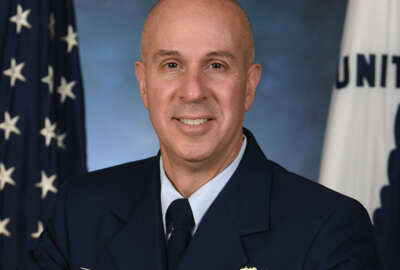The U.S. Coast Guard has received nearly $2 billion in shore infrastructure appropriations since 2018. Vice Adm. Paul Thomas, deputy commandant for Mission Support at the Coast Guard, told the House Coast Guard and Maritime Transportation subcommittee that the service is investing much of those funds into resiliency and its workforce.
But the General Accountability Office is worried that it isn’t enough.
“Our work identified that almost half of the Coast Guard’s shore infrastructure is beyond its service life, resulting in costly recapitalization construction and maintenance project backlogs, and as of 2019, these backlogs totaled more than $2.6 billion,” Heather MacLeod, acting director for Homeland Security and Justice at GAO, said during the Nov. 16 hearing. “In fact, in 2018, the Coast Guard estimated that it would take almost 400 years to address the $1.77 billion backlog of major projects reported for that year. Also, it’s likely that the estimated costs to address the backlog are understated. This is particularly concerning not only because of the amount of time needed to address the backlog, but because of other potential impacts. For example, we have identified that deferring maintenance can lead to higher costs in the long run, while also risking posing risks to safety, security, readiness, staffing, resources and mission execution.”
Added on top of that is the cost of responding to the effects of climate change as the Coast Guard invests in its facilities. MacLeod said that cost needs to be incorporated into all of the Coast Guard’s projects. Thomas said the process of folding those costs into the backlog is underway – though still in its infancy – as part of a greater climate change vulnerability assessment.
The Coast Guard is currently in phase two of this assessment, according to Thomas. Phase one involved determining which facilities are vulnerable to the effects of climate change. Phase two entails assessing the resiliency of these facilities. Phase three will require actual engineering to improve resiliency.
“So we’re working our way through that. That will take some time,” Thomas said. “When we do recapitalize our infrastructure, we do it to the latest standards for both sea level rise and flooding, etc. So when we have a chance to build new, we’re building resilient.”
But the overall degradation of Coast Guard infrastructure is already affecting mission capability, Thomas said. For example, he said that earlier this week, the Coast Guard shipyard suffered a multiple-day power outage due to its utilities being more than 100 years old. That will mean some of the ships currently being worked on will leave the yard late.
In other areas, piers are collapsing, or unusable in certain weather. In some instances, the Coast Guard has had to borrow pier space from the Navy, and ships that have done so have sometimes had to leave dock earlier than scheduled because the Navy needed the space. Recapitalization for some of the worst of these damaged piers has been funded, but the actual construction will take time.
Meanwhile, the new infrastructure bill included $429 million for Coast Guard infrastructure, a significant portion of which is being devoted to the workforce. Thomas said $130 million will go to housing and training center improvements, and another $120 million will be devoted to improving existing and building new child care centers for the Coast Guard.
“The access to child care and access to housing challenge for the Coast Guard is very different than than is for the other services. Because we’re not a garrison force. We don’t operate out of large bases. So it’s harder for us to centralize those types of services,” Thomas said. “We operate in small remote locations. So our ability to support our members and their families, whether it be through childcare or housing or access to health care is absolutely vital to our ability to recruit and to retain. The two are linked. And what we like to do is use our entire brand. Our missions are compelling to people to join our service, but our missions combined with world class support to members and their families. That is very compelling.”
And investments in training facilities, Thomas said, helps the Coast Guard compete with the other services for talent. When young people are looking for a career, the state of the art Navy facilities may look more attractive than significantly less modern Coast Guard facilities like Cape May.
The Coast Guard has a plan to recapitalize the Cape May facilities, to include new barracks for recruits and indoor training facilities. Recruits currently train outdoors regardless of the weather. But Congress has so far only funded the first of four phases of that plan.
One tool Congress has provided the Coast Guard to communicate its budget needs is its unfunded priorities list.
“It is very helpful for us to communicate with Congress what we need, but we can’t get to in our base budget,” Thomas said. “Typically, the unfunded priority list is a place for us to put other important projects that either might not be as impactful to operations or are so large that — for example, $130 million for a pier in Kodiak — so large that it would squeeze a lot of other projects out of a $280 million budget request. So that’s how we prioritize.”
Copyright
© 2024 Federal News Network. All rights reserved. This website is not intended for users located within the European Economic Area.






